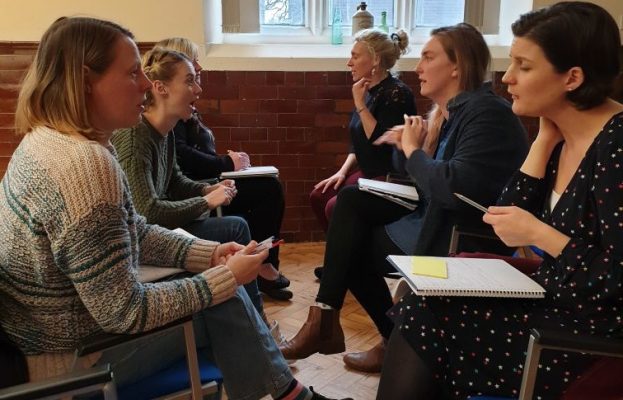Questions feature in most evaluation tools, but it can be difficult to know how and what to ask in order to evoke the desired response and gather the information that you need. The questions which are asked are so important as they shape the response, and therefore the quality of the data received. This article provides some tips and ideas on how to plan and write good questions for your evaluation.
Easy peasy evaluation strategy
- Think about exactly what you want to know. To help you with this, think about what you’re going to do with the response data. You might use it to plan something, evaluate something, or improve something. Consider what questions will actually help you to achieve this end result
- Think about the most effective way of gaining this information. Do you want quick opinions from lots of people? If so, a closed-ended survey or comments cards might work best. Are you looking for more in-depth, rich information from a small group? Telephone interviews or a focus group could be the best methods to use
- Think about how your questions fit in with your organisational context. How will the information you gain help to inform strategic aims? What sort of resources do you have for data analysis? How much time do you have to plan, prepare, and gather your information? Each of these things will have an impact on the sort of question you can ask and the depth of information you can gather.
Find out what works
It’s always worth seeking out similar evaluation types which have been carried out before, to see what has or hasn’t worked. This can provide you with ideas for question design, formatting, and any indications of things to avoid or be careful with. Question banks (links to Constant Contact) and similar resources (links to Questionnaire design document) are a great place to look, as well as seeing what has already been used in your organisation for specific ideas of what does and doesn’t work.
Question types
Once you are clear about the objectives of the survey and what you want to ask, you need to decide on a few more details surrounding the design. An extremely important part of writing better questions is ensuring that you have the correct question types (links to Surveymonkey) for your survey.
Question types:
- Open questions are used when descriptive answers are required and can provide qualitative data. They allow respondents to answer freely and provide detailed responses. However, they may produce unclear responses and are harder to analyse and categorise
- Closed questions are simple and quick to answer. The data is easier to analyse and quantify than data from open questions, however the questions may result in box ticking without really thinking about answers
- Scales and rankings are another type of closed question, which ask the respondent to rate something on a scale, for example asking ‘did the day meet your expectations’ with response options ranging from ‘it exceeded my expectations’ to ‘it did not meet my expectations’.
Formatting
The formatting of the questions is another important thing to consider. The question order should flow logically. Always avoid leading questions, asking two questions in one, double negatives, and making assumptions, as these may all lead to respondents selecting a particular response due to the question phrasing and not due to their actual thoughts and feelings. Don’t forget to thank respondents at the end of the questions.
Tips and suggestions
– It is important to speak the ‘language’ of your participants, including using age appropriate language and not using technical terminology for a group of participants who are not acquainted with technicalities in your field. Try reading your questions out loud to see how they sound.
– Questions should always be easy to understand, and equally as easy to answer. They should remain relevant, and when drafting them you should keep referring to the agreed aims and objectives to ensure your questions are valid. A small pilot study could be distributed to the target demographic for a review of questions and to locate any gaps, as well as to check that the questions flow logically.
